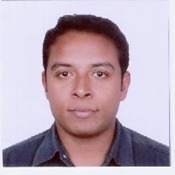Program Information
A Comparative Study of Noise-Reduction Algorithms for Low-Dose Cone-Beam Computed Tomography
S Mukherjee*, W Yao , St. Jude Children's Research Hospital, Memphis, TN
Presentations
SU-C-207-5 (Sunday, July 12, 2015) 1:00 PM - 1:55 PM Room: 207
Purpose:To study different noise-reduction algorithms and to improve the image quality of low dose cone beam CT for patient positioning in radiation therapy.
Methods:In low-dose cone-beam CT, the reconstructed image is contaminated with excessive quantum noise. In this study, three well-developed noise reduction algorithms namely, a) penalized weighted least square (PWLS) method, b) split-Bregman total variation (TV) method, and c) compressed sensing (CS) method were studied and applied to the images of a computer–simulated “Shepp-Logan” phantom and a physical CATPHAN phantom. Up to 20% additive Gaussian noise was added to the Shepp-Logan phantom. The CATPHAN phantom was scanned by a Varian OBI system with 100 kVp, 4 ms and 20 mA. For comparing the performance of these algorithms, peak signal-to-noise ratio (PSNR) of the denoised images was computed.
Results:The algorithms were shown to have the potential in reducing the noise level for low-dose CBCT images. For Shepp-Logan phantom, an improvement of PSNR of 2 dB, 3.1 dB and 4 dB was observed using PWLS, TV and CS respectively, while for CATPHAN, the improvement was 1.2 dB, 1.8 dB and 2.1 dB, respectively.
Conclusion:Penalized weighted least square, total variation and compressed sensing methods were studied and compared for reducing the noise on a simulated phantom and a physical phantom scanned by low-dose CBCT. The techniques have shown promising results for noise reduction in terms of PSNR improvement. However, reducing the noise without compromising the smoothness and resolution of the image needs more extensive research.
Contact Email:


